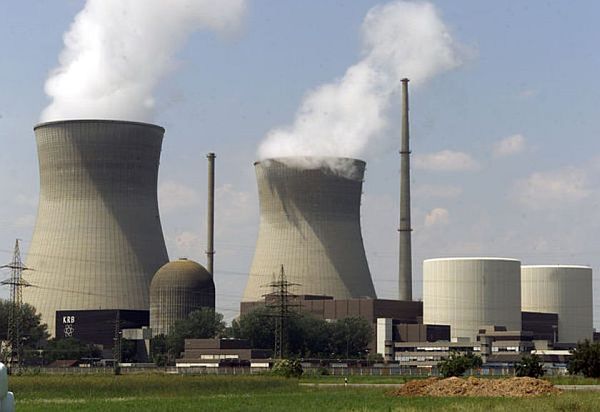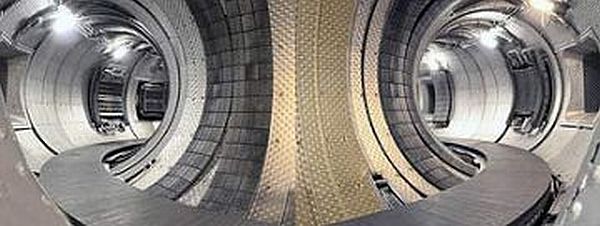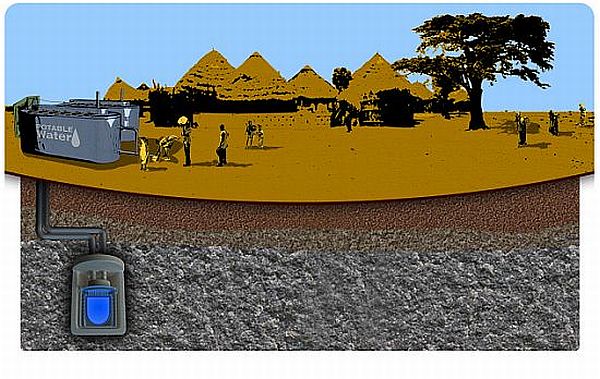
Why are we asking this now?
The world population has just crossed the 7 billion mark, the last billion added in just 12 years. This continuing growth in population causes demands on all resources, including energy. Over 80 percent of world energy demand is met by fossil fuels such as coal, oil and natural gas and these cause greenhouse gas emissions. Renewables like Hydro, Solar and Wind contribute only about 11 percent. These technologies are still evolving and seem, for the present, to be able to play only a supporting role in global energy production.
Nuclear power contributes only about 7 percent and the global thinking was to adopt nuclear energy as the intermediate solution until alternative clean energy sources emerge. The meltdown of the Fukushima reactor in February 2011 has rekindled the latent anxiety about safety of nuclear power plants. Already, Germany and Italy have announced pans to decommission all nuclear reactors in the next 10 years. In India, the Kudankulam nuclear power plant, nearing commissioning, is facing protests.
Nuclear energy is certainly not as green as solar or wind. The mining of uranium, its transport and processing all depend on fossil fuel. The actual power production process is CO2-free and there are no particulates or SOx and NOX ( Sulfur and Nitrous Oxide) emissions. There is, however, the serious problem of the spent fuel being radioactive for 25,000 years. A central storage facility, like the one planned in the Yucca mountains in Nevada, still has the issue of safety during handling and transport of the radioactive material from the power plant site to Yucca.
If nuclear energy is abandoned, what are the energy alternatives?
Is it really that serious?
In the US, 90 percent of all power plant related CO2 emissions are from coal fired plants, though these produce only 52 percent of the power. Oil and natural gas make up over 32 percent. Oil and Gas based power plants also emit CO2 and in addition are dependent on a fuel that is predicted to run out in the next 30 years. Adding fossil fuel power plants in the developing world would produce a similar disproportionate burden of CO2 emissions.
Nuclear fusion, which does not have the problem of radioactive waste is still at least 50 years in the future. Energy conservation measures could, at best, slow growth in demand in the developed world but the demand surge from the emerging economies cannot be met except by building new power plants. The emerging economies are fighting carbon control agreements precisely on the argument that they cannot deny their populations access to energy on climate change concerns, when the problem has been created by over-consumption in the developed economies.
What others are saying
Helene Pelosse, Head of the International Renewable Energy Agency (IREA), says,
IREA will not support nuclear energy programs because it is a long, complicated process, it produces waste and is relatively risky.
Dr.John Deutch, co-Chair of the MIT study group on the Future of Nuclear Energy, says
Taking nuclear power off the table as a viable alternative will prevent the global community from gaining control over CO2 emissions.
MIke Weightman, Chief Inspector of Nuclear Installations for the UK, says,
UK Nuclear facilities have no fundamental safety weaknesses. We will ensure that the lessons learned from Fukushima are used to further enhance safety at UK sites.
The developments
1. ITER

The International Thermonuclear Experimental Reactor (ITER) is a project to build a nuclear fusion test reactor. The project has participation from the European Union, USA, Japan, China, Russia, Korea and India. The project is estimated to cost over $20 billion, with 45 percent coming from the EU with the other 6 participants contributing 9 percent each. The project started construction in 2007 at Cadarache in France and is expected to be commissioned in 2019. The project aims to produce 500 MW of power for the short period of 1000 seconds with an input of less than 50 MW. This fusion reactor would only use the hydrogen isotope deuterium found in seawater as its ‘fuel’. The deuterium isotope will fuse with another hydrogen isotope tritium at very high temperatures releasing energy. The tritium will be made within the reactor from deuterium.
There are many scientific challenges to be overcome. These include the development of materials for rector construction that can withstand the very high plasma temperatures and the neutron bombardment in a safe manner. The tritium isotope produced inside the reactor is hazardous and needs to be completely consumed inside without any leakage, even in an extreme accident.
Even if the project is an unqualified success, converting the 1000 second output to a working power plant will still take a further 30 to 50 years. Meanwhile the critics of this program claim that the huge sums of money being spent on the ITER should be diverted to other renewable energy programs that could yield quicker results.
2. Hyperion Reactor

The Hyperion Reactor is part of a new class of “cartridge” reactors that are being attempted around the world. It is a sealed self-contained nuclear reactor that can produce 25 MW of electricity continuously for 10 years. It contains no moving parts and does not produce any plutonium or weapons grade fissile material. The fuel is Uranium Nitride and the coolant is Lead-Bismuth. Since the coolant has a boiling temperature of over 3000 degrees F, it is inherently safer than a water cooled reactor. The heat energy from the coolant is used to produce super-heated steam or super-heated CO2 gas that then drives a turbine to produce electricity.
The cartridge reactor measures 1.5 X 2.5 meters and weighs about 50 tons. It is designed to be transportable in a shipping container or on a rail wagon or a barge. It is buried deep underground as it needs no maintenance. At the end of the fuel life, the cartridge reactor needs to be sent back to the manufacturing plant for refueling, where the spent Uranium Nitride fuel will be re-processed.
The Hyperion technology is based on work done at the Los Alamos National Laboratory and though the approval process is likely to be long, there are unlikely doubts about the basic technology. The company hopes to sell over 4000 of these cartridge power plants with first shipments starting 2013. The approvals process for new nuclear technologies could stymie that plan.
3. India’s 25th Nuclear Power Plant

India is one of the emerging economies with a huge demand for power, as it struggles to uplift its 1.2 billion population from poverty. In July 2011, construction started on the seventh unit of the Rajasthan Atomic Power Project at Rawatbhata. The six operating reactors produce 1180 MW making RAPP the largest nuclear power plant site in India. Work on an eighth unit will start later this year.
The Pressurized Water Reactor being installed at RAPP has been designed in India and is said to be inherently safer than boiling water type reactors. Since the coolant water is under high pressure, there is no steam production inside the reactor. In addition, the primary coolant is completely isolated from the secondary water cycle and there is no risk of radiation contamination of the water used for power generation. The major precaution needed is in the high pressure pumps and piping for the primary coolant. If there is any failure or leakages in these, there could be an accident.
The main hurdles
The main hurdle to nuclear power is the potential catastrophe of a nuclear accident. There are ill informed fears about genetic disorders and higher cancer risk for people living near nuclear plants. The Fukushima disaster has reignited passionate opposition to nuclear power all round the world. The alternative of continued dependence on coal based power also has serious consequences but perhaps those appear less damaging than a nuclear accident.
What can be done?
Building on the example of the ITER, where the leading countries of the world are working collaboratively on an experimental fusion reactor, perhaps a set of fission reactors could be collaboratively set up in different parts of the world. These reactors could be built using the safest possible technology and operated by an international team of experts. This would ensure that all safety standards are maintained and there is no risk of fissile material being diverted to weapons use. The plants could be located in desert regions.
There is also the need for an open debate on how the power needs of the emerging economies will be met. At present there are unilateral positions taken by various pressure groups who argue their viewpoint without answering this basic question.




